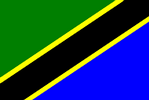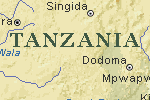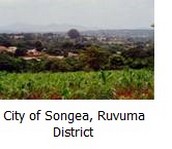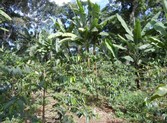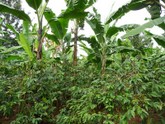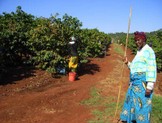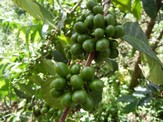Main menu:
Tanzania
Introduction |
||||||
Flag: |
|
|||||
Card: |
||||||
Background: |
Shortly after independence, Tanganyika and Zanzibar merged to form the nation of Tanzania in 1964. One-party rule came to an end in 1995 with the first democratic elections held in the country since the 1970s. Zanzibar's semi-autonomous status and popular opposition have led to two contentious elections since 1995, which the ruling party won despite international observers' claims of voting irregularities. |
|||||
Geography |
||||||
Location: |
Eastern Africa, bordering the Indian Ocean, between Kenya and Mozambique |
|||||
Coordinates: |
6° 00' S, 35° 00' E |
|||||
Map references: |
Africa |
|||||
Area: |
total: 945,087 sq km |
|||||
Note: |
includes the islands of Mafia, Pemba, and Zanzibar |
|||||
Land boundaries: |
total: 3,402 km |
|||||
Coastline: |
1.424 km |
|||||
Maritime claims: |
exclusive economic zone: 200 NM |
|||||
Climate: |
varies from tropical along coast to temperate in highlands |
|||||
Terrain: |
plains along coast; central plateau; highlands in north, south |
|||||
Elevation extremes: |
lowest point: Indian Ocean 0 m |
|||||
Natural resources: |
hydropower, tin, phosphates, iron ore, coal, diamonds, gemstones, gold, natural gas, nickel |
|||||
Geography - note: |
Kilimanjaro is highest point in Africa |
|||||
People |
||||||
Population: |
36,232,074 |
|||||
Note: |
estimates for this country explicitly take into account the effects of excess mortality due to AIDS; this can result in lower life expectancy, higher infant mortality and death rates, lower population and growth rates, and changes in the distribution of population by age and sex than would otherwise be expected (July 2001 est.) |
|||||
Nationality: |
noun: Tanzanian(s) |
|||||
Ethnic groups: |
mainland - native African 99% (of which 95% are Bantu consisting of more than 130 tribes), other 1% (consisting of Asian, European, and Arab); |
|||||
Religions: |
mainland - Christian 45%, Muslim 35%, indigenous beliefs 20%; |
|||||
Languages: |
Kiswahili or Swahili (official), Kiunguju (name for Swahili in Zanzibar), English (official, primary language of commerce, administration, and higher education), Arabic (widely spoken in Zanzibar), many local languages |
|||||
Note: |
Kiswahili (Swahili) is the mother tongue of the Bantu people living in Zanzibar and nearby coastal Tanzania; although Kiswahili is Bantu in structure and origin, its vocabulary draws on a variety of sources, including Arabic and English, and it has become the lingua franca of central and eastern Africa; the first language of most people is one of the local languages |
|||||
Goverment |
||||||
Country name: |
conventional long form: United Republic of Tanzania |
|||||
Government type: |
Republic |
|||||
Capital: |
Dar es Salaam |
|||||
Anmerkung: |
legislative offices have been transferred to Dodoma, which is planned as the new national capital; the National Assembly now meets there on regular basis |
|||||
Flag description: |
divided diagonally by a yellow-edged black band from the lower hoist-side corner; the upper triangle (hoist side) is green and the lower triangle is blue |
|||||
Economy |
||||||
Economy - overview: |
Tanzania is one of the poorest countries in the world. The economy is heavily dependent on agriculture, which accounts for half of GDP, provides 85% of exports, and employs 80% of the work force. Topography and climatic conditions, however, limit cultivated crops to only 4% of the land area. Industry is mainly limited to processing agricultural products and light consumer goods. The World Bank, the International Monetary Fund, and bilateral donors have provided funds to rehabilitate Tanzania's deteriorated economic infrastructure. Growth in 1991-2000 featured a pick up in industrial production and a substantial increase in output of minerals, led by gold. Natural gas exploration in the Rufiji Delta looks promising and production could start by 2002. Recent banking reforms have helped increase private sector growth and investment. Continued donor support and solid macroeconomic policies should allow Tanzania to achieve real GDP growth of 6% in 2001 and in 2002. |
|||||
Industries: |
primarily agricultural processing (sugar, beer, cigarettes, sisal twine), diamond and gold mining, oil refining, shoes, cement, textiles, wood products, fertilizer, salt |
|||||
Agriculture - products: |
coffee, sisal, tea, cotton, pyrethrum (insecticide made from chrysanthemums), cashew nuts, tobacco, cloves (Zanzibar), corn, wheat, cassava (tapioca), bananas, fruits, vegetables; cattle, sheep, goats |
|||||
Currency |
Tanzanian shilling (TZS) |
|||||
Currency code: |
TZS |
|||||
Transportation |
||||||
Railways: |
total: 3,569 km (1995) |
|||||
Note: |
the Tanzania-Zambia Railway Authority (TAZARA), which operates 1,860 km of 1.067-m narrow gauge track between Dar es Salaam and Kapiri Mposhi in Zambia (of which 969 km are in Tanzania and 891 km are in Zambia) is not a part of Tanzania Railways Corporation; because of the difference in gauge, this system does not connect to Tanzania Railways |
|||||
Highways: |
total: 88,200 km |
|||||
Waterways: |
Lake Tanganyika, Lake Victoria, and Lake Nyasa are principal avenues of commerce between Tanzania and its neighbors on those lakes |
|||||
Coffee |
||||||
|
||||||
Tanzania Peaberry - New crop (2003) screen 17 |
||||||
It's good to have a little background information on Tanzanian coffees; A good Tanzanian coffee from the North can be a treat, but many lots that arrive in the U.S. never had a chance. The Northern coffees are grown near Kenya (Mt. Kilimanjaro) and bear that out in the cup: more acidity, lighter body. But the Southern district coffees from the mountains of the northeast rim of Lake Malawi are full bodied, have milder acidity, and extremely long in the aftertaste. The problem with Tanzanian Peaberry has less to do with where it is from and the original cup quality it possesses. Poor cup character is the result of poor transporation routes to port, and while at port the shipping container that is delayed from leaving the country can bake the coffee in the humid, blistering sun ...not good. So even a good Tanzanian coffee can go bad en route. The result are harsh, baggy flavors in the cup. The Ruvumas show none of that, and this Peaberry has a great combination of strong character with balance. It has more body than the Northern peaberry, lighter acidity, a twist of East Africa wildness (part hidey, part rooty), and a long aftertaste. This 2003 lot we have now is the best Tanzanian coffee I have ever cupped! It is a deep, complex array of flavors with an apricot brandy fruitiness and almond oil finish, which turns to a sweet jasmine as the cup cools. |
||||||
Major Coffee Growing Regions: |
Moshi District: sides of Mt. Kilimanjaro |
|||||
Grading, |
AA |
(14% of crop) |
||||
Altitude: |
950 - 1,900 Meter |
|||||
Harvest Times:: |
Oktober bis February |
|||||
Shppingperiode: |
November bis April |
|||||
port of export: |
Tanga (Amex Kaffees) |
|||||
Shipment: |
in container in bags (upto 320 of 60.- kos net each) |
|||||
Production: |
980.000 bags |
|||||
Export figures: |
530.921 bags |
|||||
Caffeine content: |
1,42 % |
|||||
Produktion: |
980,000 Sack |
|||||
Export: |
530,921 Sack |
|||||
Koffeininhalt: |
1,42 % |
|||||








